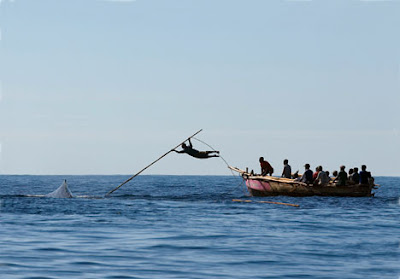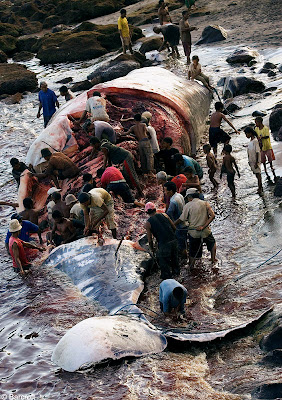 Their way of life hasn't changed for hundreds of years - a group of skilled fishermen using only their bodies and extraordinary bravery to catch 75ft-long (22.86m) sperm whales to provide enough food and materials for their whole village.
Their way of life hasn't changed for hundreds of years - a group of skilled fishermen using only their bodies and extraordinary bravery to catch 75ft-long (22.86m) sperm whales to provide enough food and materials for their whole village. It is like a scene from Moby Dick, except the odds are stacked even higher against the captains of each tiny wooden boat.
These amazing images were taken during a whale hunt in one of the last places on Earth where people still use traditional methods to fish for one of the largest creatures in the seas.
They battle for more than six hours, their hands gripping traditional duri flensing knives, to subdue the whale - which they call Koteklema.
Finally, the fishermen of Lamalera (a village perched on the southern part of Lembata island, Indonesia) kill their prey with their bare hands.
It is all a far cry from the whaling fleets of Japan, whose factory boats and grenade harpoons wreak slaughter on an industrial scale.
The sails of the Lamalera boats are woven from gebang leaves and each vessel is hand-made, with no nails or metal parts. Ropes are made from palm leaves and waru wood fibres, coiled together.
There is no other equipment - apart from the centuries-old rituals of whale-hunting passed down through the generations.
More pictures after the jump.




Link & Image: DailyMail
Tags: Whale | Catch
Comments